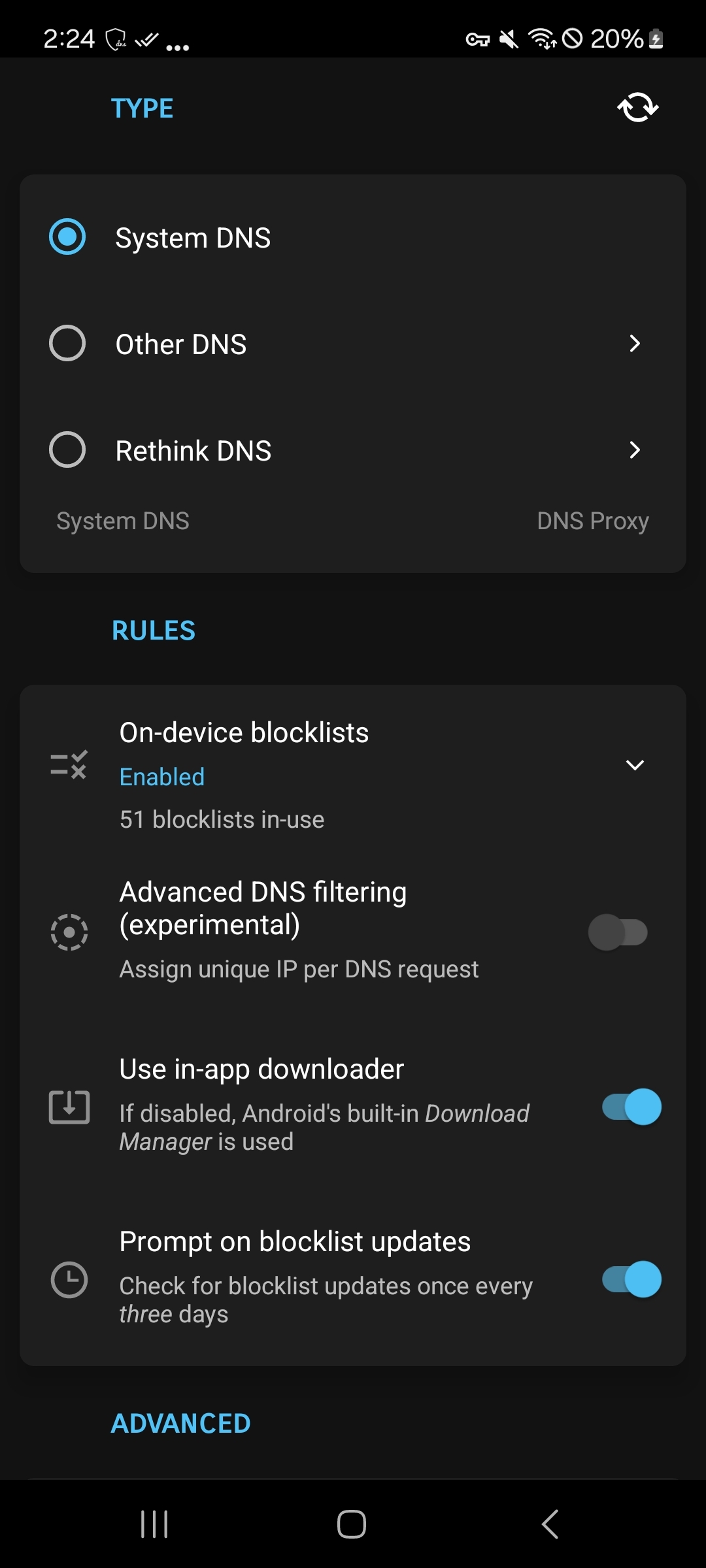

On Android, I didn’t find any apps that let you filter blocklists and using your own VPN other than Rethink, but the blocklists feature requires using Rethink’s DNS.
You probably missed it but you can totally use rethink’s block list without rethink’s DNS (system DNS or Wireguard).
It’s called On-device blocklist




Thanks for the info ! I mostly download my applications directly from the source with Obtainium.
However I didn’t notice any bugs with wireguard recently. The 0.5.5n seems rather stable to me :).
Glad you found it ! Hope it fill in the gaps you needed with RethinkDNS which is IMO rather complex and overall very customizable !